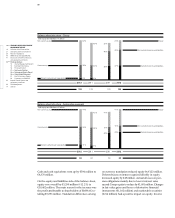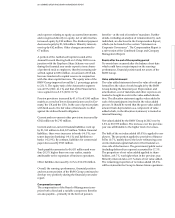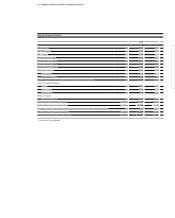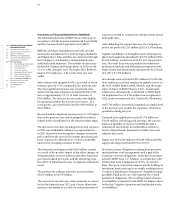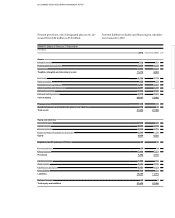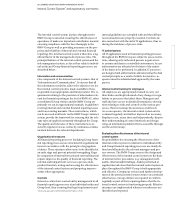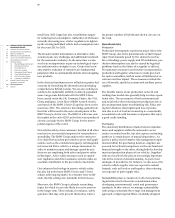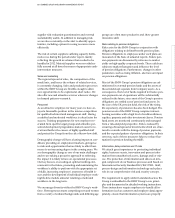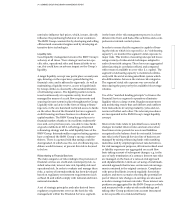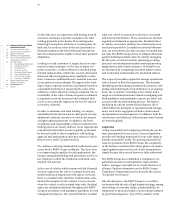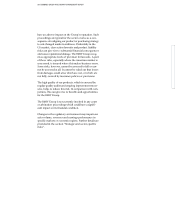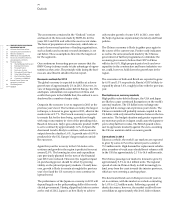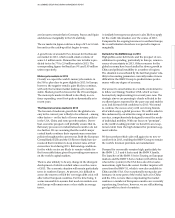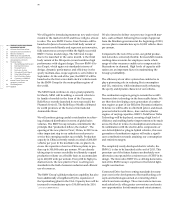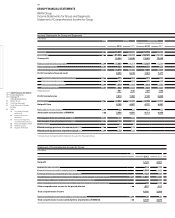BMW 2012 Annual Report Download - page 68
Download and view the complete annual report
Please find page 68 of the 2012 BMW annual report below. You can navigate through the pages in the report by either clicking on the pages listed below, or by using the keyword search tool below to find specific information within the annual report.
68
18 COMBINED GROUP AND COMPANY
MANAGEMENT REPORT
18 A Review of the Financial Year
21 General Economic Environment
24 Review of Operations
44 BMW Stock and Capital Market
47 Disclosures relevant for takeovers
and explanatory comments
50 Financial Analysis
50 Internal Management System
52 Earnings Performance
54 Financial Position
57 Net Assets Position
59 Subsequent Events Report
59 Value Added Statement
61 Key Performance Figures
62 Comments on BMW AG
65 Internal Control System and
explanatory comments
66 Risk Management
74 Outlook
model year 2025. Japan has also set ambitious targets
for reducing fuel consumption. Authorities in China are
currently discussing new, stricter regulations to tighten
up the existing individual vehicle fuel consumption rules
for the years 2013 to 2015.
The broader market introduction of alternative drive
systems means new challenges and additional investment
for the automotive industry. At the same time we also
see this as an opportunity to put our technological exper-
tise
and innovative strengths to use. Greater fuel econ-
omy and the reduction of emissions are fundamental
parameters that we automatically include when designing
new products.
In the short and medium term we will achieve greater fuel
economy by electrifying the drivetrain and developing
comprehensive hybrid systems. We are also working on
solutions for sustainable mobility in densely populated
areas. Large-scale field trials with the MINI E have
been
carried out in the UK, Germany, France, the USA,
China and Japan. A test fleet of BMW ActiveE electric
cars based on the BMW 1 Series Coupé has been on the
road since 2011. The extensive knowledge gained from
the trials will be used in the series development of the
BMW Group’s electric cars. The BMW i3 will come onto
the market at the end of 2013 as the first series-produced
electric car made by the BMW Group for the metro-
politan
regions
of the world.
Not only the safety of our customers, but that of all other
road users is an essential component of our product re-
sponsibility. The BMW Group analyses the entire pro-
cess chain from accident prevention to post-crash appli-
cations, such as the extended emergency call integrated
in Connected Drive, which is a unique innovation. In
order to minimise injury and damage caused by acci-
dents we are employing both active and passive safety
technologies. Active safety measures such as suspen-
sion regulation and driver assistance systems make an
essential contribution to the prevention of accidents.
Our enhanced technology in passive vehicle safety
has
also led to the latest BMW 3 Series and 5 Series
sedans achieving top marks in consumer tests world-
wide,
thereby setting new standards in their classes.
Moreover, the BMW Group is already researching
topics for which we are only likely to receive answers
in the longer term. These include, for instance, safety
questions that may only present themselves when a
far greater number of hybrid and electric cars are on
the
road.
Operational risks
Production
Production interruptions represent a major risk for the
BMW Group, due to the potential scale of their impact.
Apart from hazards posed by the elements (such as
fire
or flooding), power supply and IT breakdowns, pro-
duction interruptions can also be caused by logistical
problems (such as the failure of a supplier to deliver).
Precautionary measures are therefore incorporated in
production and logistics structures to make provision
for such eventualities, both in terms of likelihood of oc-
currence and loss impact. These measures include the
use of firewalls, sprinkler systems and auxiliary power
supplies.
The flexible nature of our production network and
working time models also generally help to reduce opera-
tional
risks. The assessment of both environmental
and
social risks when selecting new production sites is
also an important factor in minimising risk. Risks aris-
ing from business interruption and loss of produc-
tion due to acts of God are insured up to economically
reasonable levels with insurance companies that enjoy
a good credit standing.
Purchasing
The customary distribution of tasks between manufac-
turers and suppliers within the automotive sector
creates economic benefits, but also exposes contracting
parties to a certain degree of mutual dependence. As
part of a policy of preventative risk management imple-
mented within the purchasing function, suppliers are
assessed for technical competence on the one hand and
financial strength on the other, during both the develop-
ment and production phases of our vehicles. Suppliers’
risks at a local level also play an increasingly important
role in the context of decision-making. As part of our
catalogue of procedures, for instance, we also assess the
extent to which supplier sites are exposed to natural
hazards, such as floods or earthquakes, thus reducing
our exposure to parts supply risks.
Sustainability plays a crucial role in all of our purchas-
ing activities and is taken into consideration when
developing environmental, social and governance
standards. In this context, we manage sustainability
risks using a systematic three-stage risk management
approach, comprising risk filters, modularly designed


